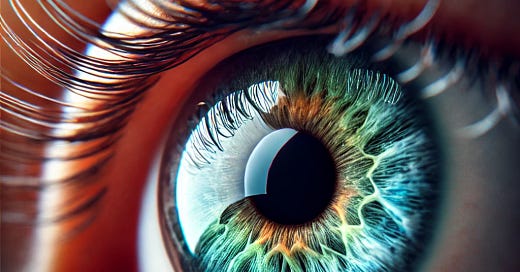Menopause brings a host of changes to a woman’s body, and while much attention is given to hot flashes, mood swings, and sleep disruptions, many women don’t realize that their eye health can also be significantly impacted during and after this transition. The hormonal shifts that occur during menopause—especially the drop in estrogen—can affect the eyes in several ways, leading to discomfort, changes in vision, and even a heightened risk for certain eye diseases.
In this article, we’ll explore five common eye problems women may face after menopause, how to recognize the symptoms, and what steps you can take to protect your vision and maintain healthy eyes as you age.
1. Dry Eyes: Irritation and Discomfort
Dry eyes are one of the most common and frustrating eye problems women experience after menopause. With the drop in estrogen levels, the tear glands often produce fewer tears, and the Meibomian glands, which secrete the oily layer of tears, may become less effective. This can lead to dry, irritated eyes, as well as a gritty or burning sensation.
Symptoms of Dry Eyes:
Stinging, burning, or scratchy feeling in the eyes
Redness or irritation
Blurred vision, especially after prolonged use of digital screens
Sensitivity to light
Watery eyes (a reaction to dryness)
How to Manage It:
Artificial tears or lubricating eye drops can help alleviate symptoms by adding moisture to the eyes.
A humidifier can help keep the air in your home more moist, reducing dryness.
Consuming more omega-3 fatty acids (found in fish like salmon and flaxseeds) can help improve tear quality.
Avoid direct airflow from fans or air conditioning, which can further dry out your eyes.
2. Cataracts: Clouded Vision
Cataracts, which cause clouding of the eye’s lens, are a common age-related condition, and the risk of developing cataracts increases after menopause. Estrogen has a protective effect on the eyes, helping to maintain lens clarity. With the decline in estrogen, the lens is more prone to oxidative stress and protein buildup, leading to cataract formation.
Symptoms of Cataracts:
Cloudy or blurry vision
Difficulty seeing at night
Sensitivity to glare and bright lights
Seeing halos around lights
Colors appearing faded or yellowed
How to Manage It:
While cataracts are a natural part of aging, they can be treated effectively with surgery, during which the cloudy lens is replaced with a clear artificial lens. If you experience vision changes, it’s important to consult an eye doctor to monitor the progression of cataracts.
3. Glaucoma: The Silent Threat
Glaucoma is an eye condition that damages the optic nerve, often due to increased pressure inside the eye, known as intraocular pressure (IOP). Menopausal women are at a heightened risk of glaucoma, possibly due to the drop in estrogen, which plays a role in regulating eye pressure. Open-angle glaucoma, the most common type, progresses slowly and without symptoms, which is why it’s often referred to as the “silent thief of sight.”




